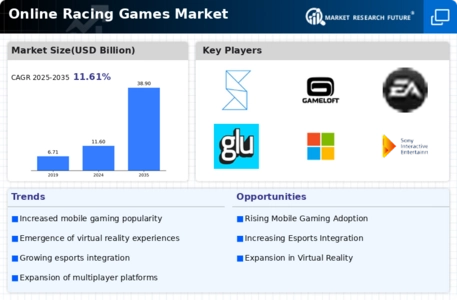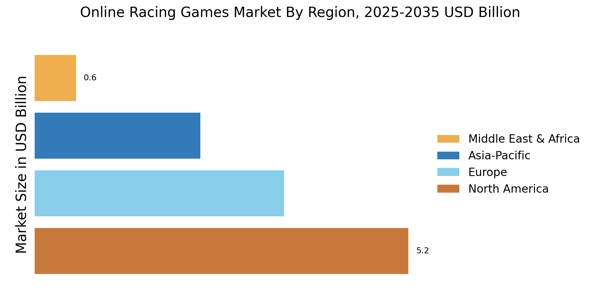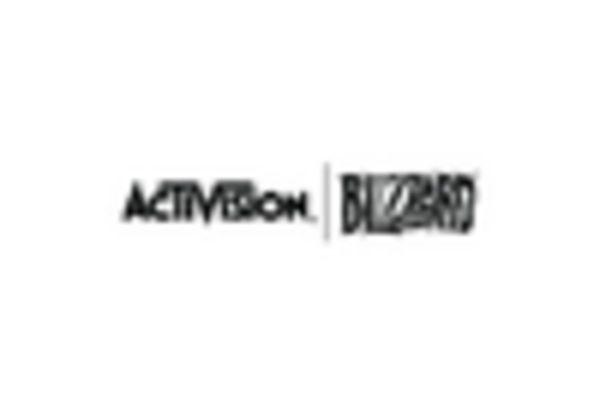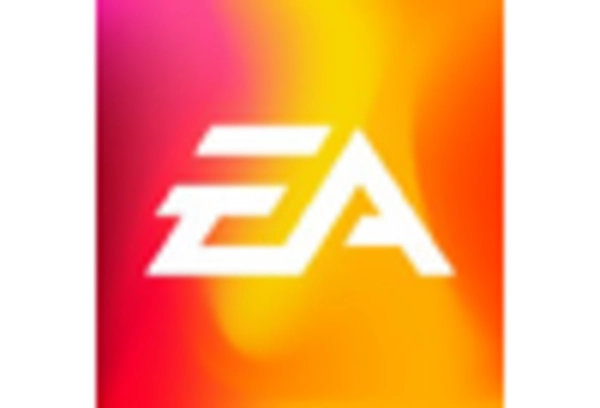Diverse Monetization Strategies
The Online Racing Games Market is characterized by diverse monetization strategies that cater to various player preferences. Developers are increasingly adopting free-to-play models, supplemented by in-game purchases and microtransactions. This approach allows players to access games without upfront costs while providing opportunities for developers to generate revenue through cosmetic items, upgrades, and season passes. Market analysis suggests that the in-game purchase segment is expected to account for a significant portion of the overall revenue in the Online Racing Games Market, potentially reaching $3 billion by 2025. This flexibility in monetization not only attracts a wider audience but also encourages ongoing player engagement.
Growing Popularity of Competitive Gaming
The Online Racing Games Market benefits significantly from the growing popularity of competitive gaming and esports. As more players seek to showcase their skills in competitive environments, racing games are increasingly featured in esports tournaments. This trend not only elevates the profile of racing games but also attracts sponsorships and investments, further fueling the market's growth. Recent statistics indicate that esports revenues are projected to surpass $1.5 billion by 2026, with racing games contributing a notable share. The rise of competitive gaming fosters a community of dedicated players, enhancing the longevity and appeal of the Online Racing Games Market.
Increased Accessibility of Online Racing Games
The Online Racing Games Market experiences a notable surge in accessibility due to advancements in technology and the proliferation of high-speed internet. This accessibility allows players from diverse backgrounds to engage in racing games without the need for expensive hardware. The rise of cloud gaming platforms further enhances this trend, enabling users to play high-quality racing games on various devices, including smartphones and tablets. As a result, the player base expands, with estimates suggesting that the number of active players in the Online Racing Games Market could reach over 200 million by 2026. This increased accessibility not only attracts casual gamers but also fosters a competitive environment, encouraging more players to participate in online racing events.
Enhanced Social Features and Community Engagement
The Online Racing Games Market is evolving with enhanced social features that promote community engagement among players. Many racing games now incorporate social elements, such as leaderboards, multiplayer modes, and online events, fostering a sense of competition and camaraderie. These features encourage players to connect, share experiences, and participate in community-driven events, which can lead to increased player retention. Data indicates that games with robust social features tend to have higher engagement rates, with some titles reporting player retention rates exceeding 70%. This focus on community engagement is likely to play a crucial role in the sustained growth of the Online Racing Games Market.
Integration of Virtual Reality and Augmented Reality
The Online Racing Games Market is witnessing a transformative shift with the integration of virtual reality (VR) and augmented reality (AR) technologies. These innovations provide players with immersive experiences that enhance gameplay and engagement. VR racing games allow players to feel as though they are truly behind the wheel, while AR elements can overlay real-world environments with racing challenges. This technological evolution is likely to attract a broader audience, including those who may not have previously engaged with racing games. Market data indicates that the VR gaming segment is expected to grow at a compound annual growth rate of over 30% in the coming years, suggesting a promising future for the Online Racing Games Market as it embraces these cutting-edge technologies.


















Leave a Comment